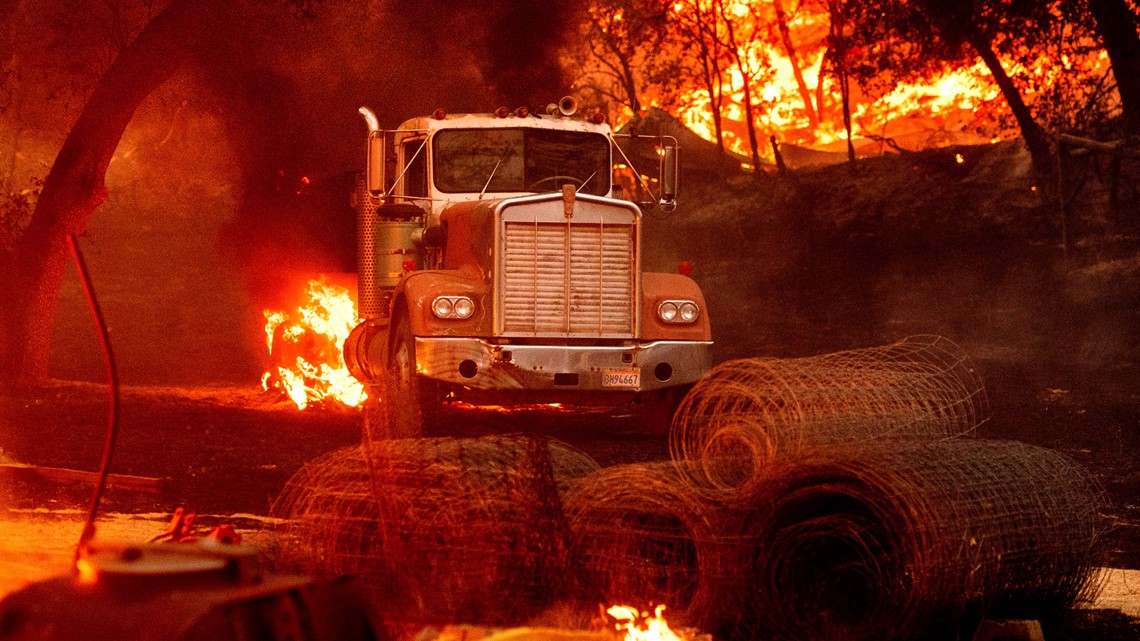SAN FRANCISCO — In a year that has already brought apocalyptic skies and smothering smoke to the West Coast, California set a grim new record Sunday when officials announced that the wildfires of 2020 have now scorched a record 4 million acres — in a fire season that is far from over.
The unprecedented figure — an area larger than the state of Connecticut — is more than double the previous record for the most land burned in a single year in California.
“The 4 million mark is unfathomable. It boggles the mind, and it takes your breath away,” said Scott McLean, a spokesman for the California Department of Forestry and Fire Protection, known as Cal Fire. It is an area that is larger than the state of Connecticut. “And that number will grow.”
Cal Fire said in a statement Sunday that there have been more than 8,200 wildfires since the start of the year that have burned “well over 4 million acres in California” or 6,250 square miles. The previous record was set two years ago when wildfires destroyed 1.67 million acres (2,609 square miles).
The fires of 2020 have killed 31 people, incinerated hundreds of homes and forced thousands of people to evacuate their homes. The enormity of the fires has meant that people living far from the flames experienced a degree of misery that in itself was unprecedented, with historically unhealthy air quality and smoke so dense that it blurred the skies across California and on some days even blotted out the sun. Last month, a relentless heat wave hit the state that helped fuel the fires and caused so much air pollution that it seeped indoors, prompting stores across California to sell out of air purifiers.
Despite Sunday's grim milestone, there were signs for optimism.
Powerful winds that had been expected to drive flames in recent days hadn’t materialized, and warnings of extreme fire danger for hot, dry and gusty weather expired Saturday morning as a layer of fog rolled in. Clearer skies in some areas allowed large air tankers to drop retardant after being sidelined by smoky conditions several days earlier.
“In certain areas, we were able to get quite a bit of aircraft in. So we really pounded, a couple different areas hard with aircraft,” Mclean said. “If the weather does what is predicted, we’re on that glide path I hope. But that doesn’t diminish the amount of work that still needs to be done.”
A cooling trend is expected to slowly begin on Sunday. Long-range forecast models hinted at the possibility of rain early next week.
Fire officials said the Glass Fire burning in wine country for the past week was their top priority. Easing winds over the weekend proved a mixed blessing for firefighters battling the giant blaze, which is currently 17 percent contained.
“We are seeing some relief in the weather, but it’s going to be three of four days before it really makes a difference on the fire,” Cal Fire meteorologist Tom Bird said at a Sunday news briefing about the Glass Fire. “The one good thing going forward, we’re not expecting any wind events to push into the fire.”
Three fires, driven by strong winds and high temperatures, merged into one tearing into vineyards and forested mountain areas, including part of the city of Santa Rosa. Thousands of people were under evacuation orders, including the entire population of Calistoga, a town of 5,000.
Across the state about 17,000 firefighters were at work battling nearly two dozen major blazes.
Virtually all the damage has occurred since mid-August, when five of the six largest fires in state history erupted. Lightning strikes caused some of the most devastating blazes. The wildfires have incinerated hundreds of homes and killed 31 people but large parts of them are burning in largely unpopulated land.
Many of the most destructive fires sparked in Northern California, where hills and mountains dotted with many dead trees have provided plenty of fuel for fires igniting amid high temperatures and strong winds fanning the flames. Thick, gray smoke from the blazes has fouled the air in many hill communities and major cities in the San Francisco Bay Area and beyond.
Numerous studies have linked bigger wildfires in America to climate change from the burning of coal, oil and gas. Scientists say climate change has made California much drier, meaning trees and other plants are more flammable.



